Independent Collectors
Diane Venet Collection
Una Meistere in conversation with Diane Venet about collecting jewellery made by artists.
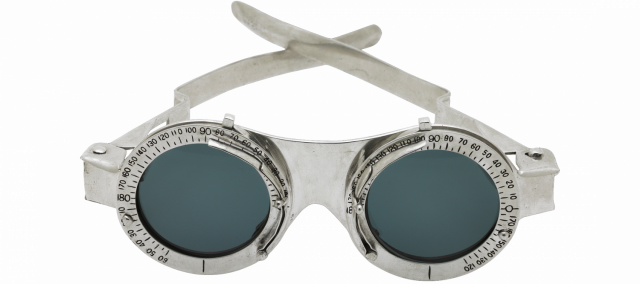
Against the backdrop of Arterritory’s latest exhibition “Jewellery by Artists: From Picasso to Koons” at the Latvian National Museum of Art, Una Meistere talks to Diane Venet whose collection of jewelry reflects the essence of 20th and 21st century art in miniature.
Diane Venet owns one of the most unique, most emotional and, in a sense, also one of the most intimate collections of art in the world. For over 20 years she has been collecting jewellery made by artists. The pieces are miniature sculptures, creative and sometimes quite sentimental affairs to which the artists have been impelled by very personal events in their lives. Venet calls her collection an “intimate museum” not only because it’s so compact (it fits into a couple of boxes), but also because artist jewellery is essentially a key that combines private history and the history of art in a very special way. Even though Venet’s collection consists of objects – small works of art – the stories that accompany each work of art are just as important. In fact, the objects and stories are often so intertwined that they cannot be separated.
To begin with, the origin of her collection is quite unique and very personal. Venet is married to Bernar Venet, a well-known French sculptor and conceptual artist. Her collection began with her wedding ring, which Bernar created by spontaneously wrapping a thin silver band around her finger in a style characteristic of his art. The ring was later followed by a number of brooches and necklaces. Each of Bernar’s creations embodied a miniature essence of his artistic journeys and searches, thus turning each piece into a very personal record of his creative and emotional life.
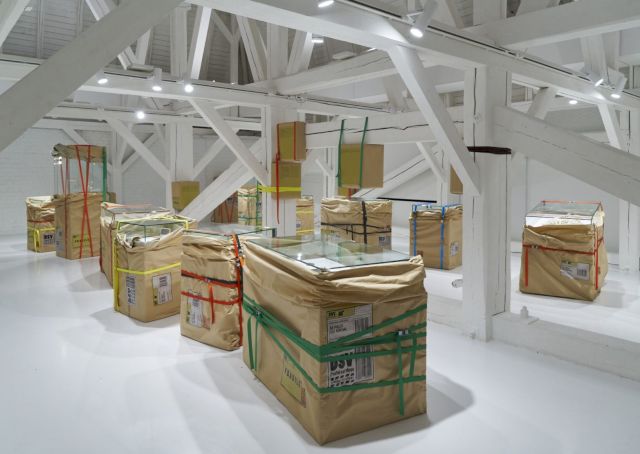
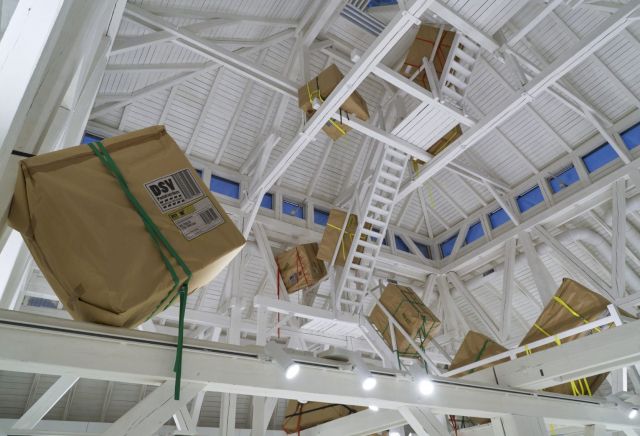
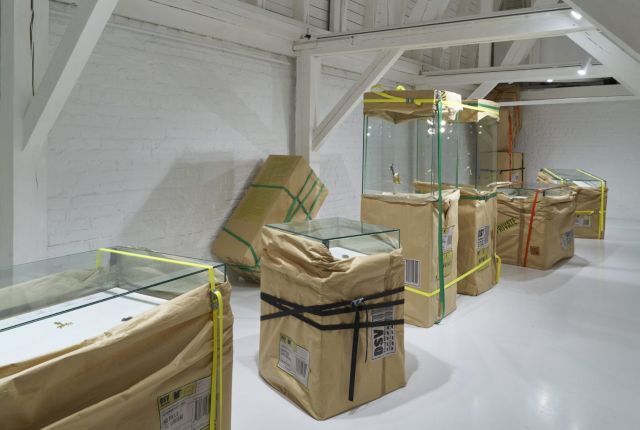
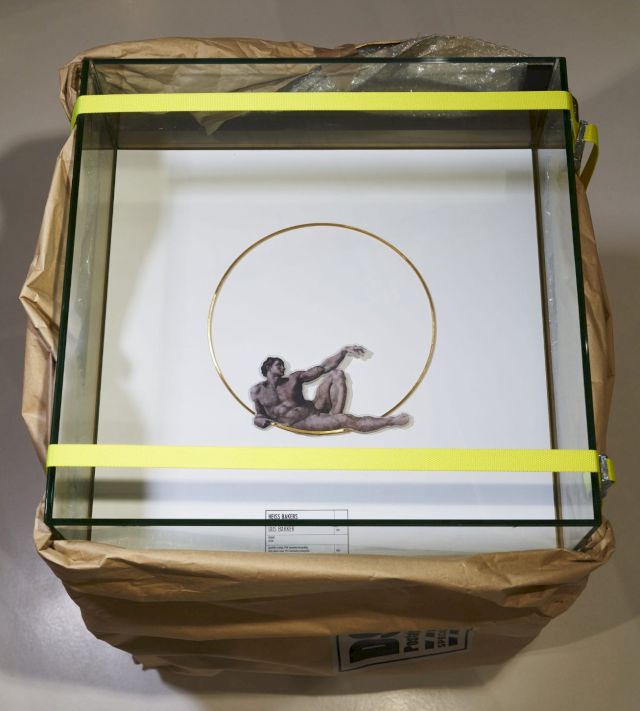
Today, Venet’s collection consists of over 200 pieces of jewellery, spanning a time period from the second half of the 20th century to today. Pablo Picasso, Alberto Giacometti, Georges Braque, Salvador Dalí, Robert Indiana, Louise Bourgeois, Sol LeWitt, Robert Rauschenberg, Lucio Fontana, Wim Delvoye, Roy Lichtenstein, Michael Craig-Martin, Andres Serrano and Jeff Koons are only some of the names represented in the collection. And, even though some of the jewellery has been made in several editions, its unifying element is usually one and the same, namely, that the pieces have been made with one particular person in mind.
Many of the pieces in Venet’s collection were made specifically for her. For example, Orlan made her a brooch that is a kind of miniature self-portrait of the artist. The brooch was inspired by Orlan’s legendary Self-Hybridization series. John Chamberlain’s first foray into jewellery was also inspired by Venet. She continues to approach new artists today, thereby growing her collection and at the same time challenging artists to be bold and cross boundaries. Andres Serrano, Pedro Cabrita Reis and Jason Martin are the latest to have joined the collection lately.Venet admits to chasing after some of the gems in her collection for years, the search thus turning into a veritable research process.
Venet’s mission has always been to share. She wears jewellery from her collection every day, and the collection has been exhibited in a number of venerable art institutions. In 2011, the exhibition From Picasso to Koons: Artist as Jeweller was shown at New York’s Museum of Arts and Design (MAD). The exhibition later travelled to Athens, Valencia, Miami and Seoul.
This summer, it was shown in Venice, and for a year next summer, it will tour in China starting at CAFA, the very beautiful academy museum in Beijing. In 2017 it will travel back to the Musée des Arts Décoratifs in Paris. Venet admits, though, that her passion has in large part created the market for artist jewellery, with prices rising in direct proportion to its growth and thus palpably limiting her own opportunities to add to her collection. She can no longer afford much of what she deems valuable.
We meet on an unreasonably rainy October day in New York at the studio of Venet’s husband. They are both in the city to attend the opening at the Whitney Museum of a grand retrospective of Frank Stella, the American classic of conceptual art and also a friend of the Venets. Venet is wearing the Orchid Ringmade by Marc Quinn in 2009, which was inspired by the artist’s Garden series (2000), a psychedelic collection of exotic plants preserved in silicone oil. “You can immediately tell it’s a Quinn,” she says. But, although the artist’s jewellery seems to be just miniatures of his large-format works of art, they gain an additional dimension of artistic experience due to their wearability. They become self-sufficient objects, separate works of art themselves.
It’s a challenge, it’s a joke. And a love story, too.
DIANE VENET
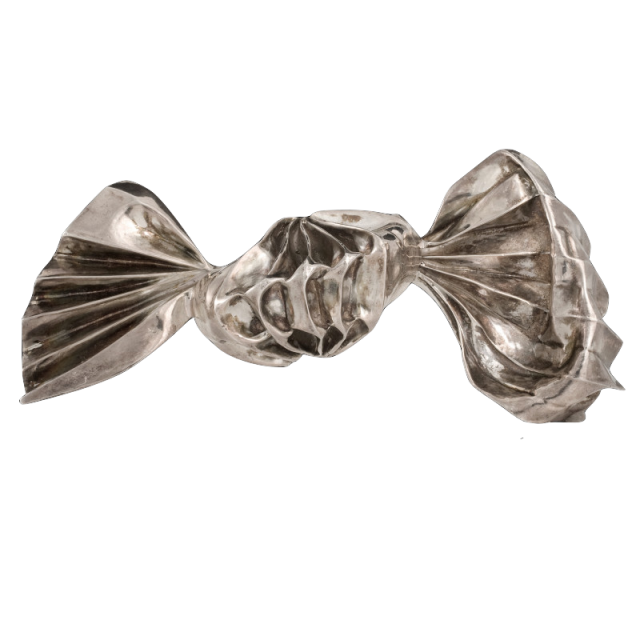
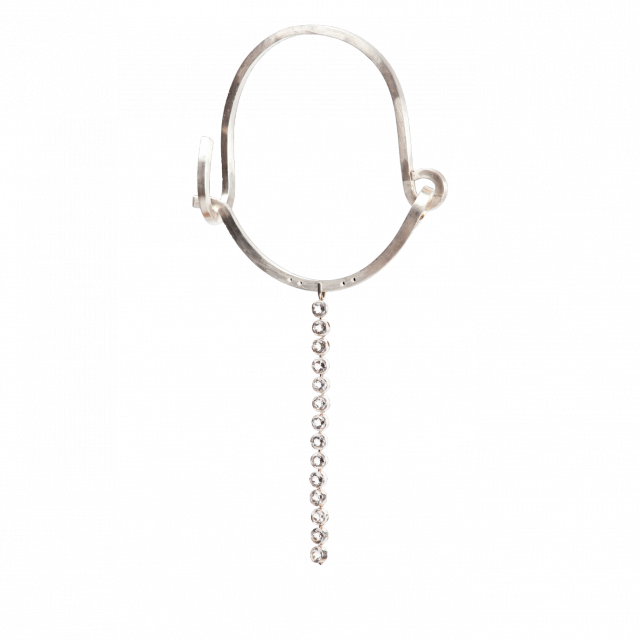
UNA MEISTERE
You have jewellery by Frank Stella in your collection, but I’ve read that he turned you down several times before making jewellery for you.
DIANE VENET
I have two – a necklace and a ring. My husband started my collection twenty years ago by giving me a piece of jewellery he had made himself. And then he asked his artist friends – César, Arman and others – to do a piece for me. When he talked about it to Frank Stella several years ago, he said, “No, I’m not interested.” Three months later, I called him and tried to persuade him, but he again said no. But because we’re friends and we see each other fairly frequently, Bernar talked to him again one time as we were having dinner at Stella’s house – “Frank, it’s such a pity, because Chamberlain is doing a piece especially for Diane, and others, too.” Then Stella stood up, opened a drawer behind him and gave me a gilt-painted necklace in a style inspired by his reliefs. He created it using his computer in the same way as he makes his sculptures. A year later he gave me another piece – a gold ring with curved forms, which was also inspired by his work as a sculptor.
Stella is so creative. Next year he’ll be celebrating his 80th birthday, and he’s still working. It’s crazy. It’s fantastic! He has an unbelievable studio upstate New York, huge, and he creates all the time. And he dares, which I love. He says, “It doesn’t matter if people don’t like my work. I need to do it.”
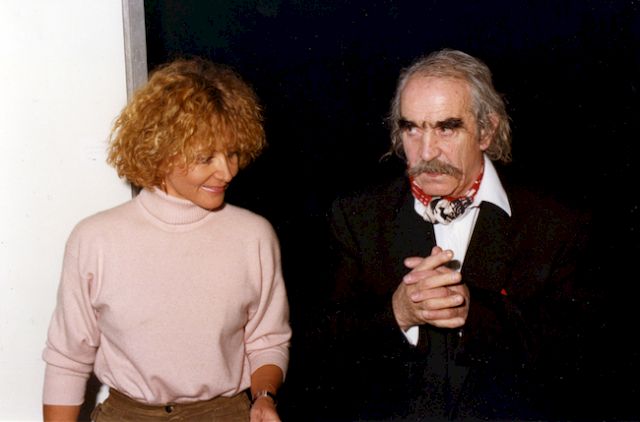
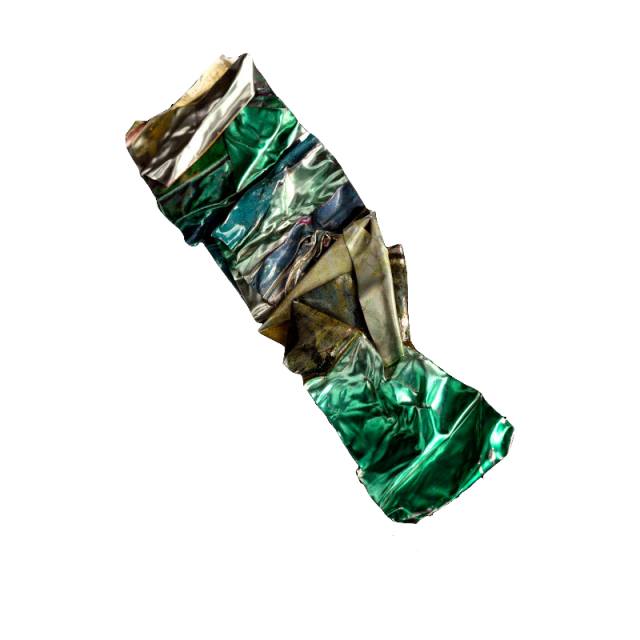

UNA MEISTERE
What fascinates an artist about making jewellery?
DIANE VENET
It’s a challenge. How can I do something very small, something that is me and yet at the same time is not just a miniature of my work? It’s a challenge, it’s a joke. And a love story, too. Bernar is never going to buy me a Hermès bag; he’s going to give me a piece of jewellery instead. Each piece of jewellery has its own story. For example, the Chilean artist Roberto Matta once said that his desire was to make “objects to touch rather than to look at”. I never met him, but I know his wife, and she lent me his necklace for the exhibition in New York. It’s so beautiful, because he took mother-of-pearl and twisted gold thread around it and around her neck. She is a tiny woman, and you feel the artist’s hands. It’s very touching and very intimate. And you feel he did it with love…which I think is beautiful.
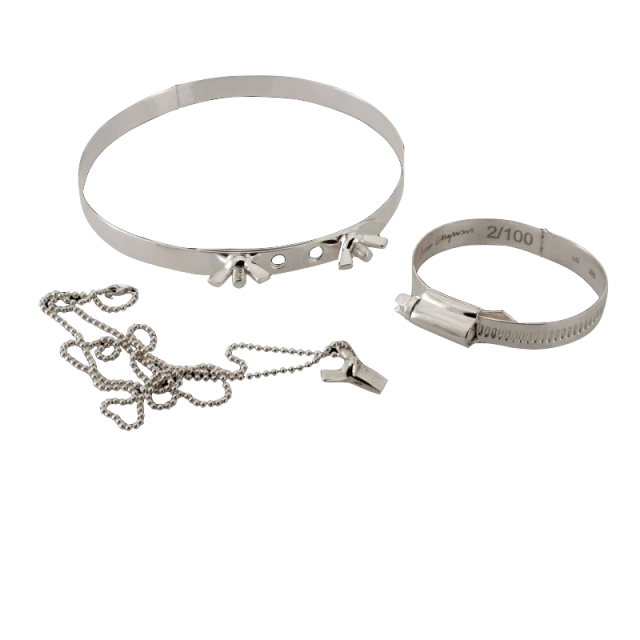
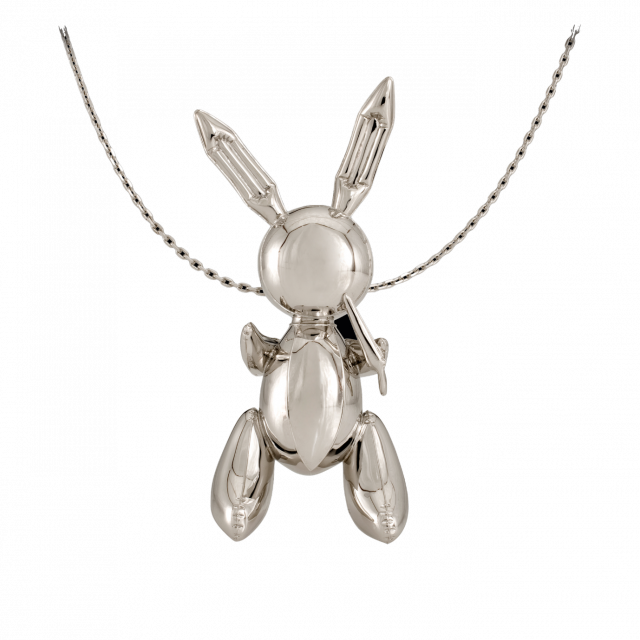
UNA MEISTERE
It seems that most artist jewellery could have been inspired by a romantic story.
DIANE VENET
Picasso made jewellery for his mistresses Dora Maar and Marie-Thérèse Walter. When he was on the beach, he just picked up pebbles and then painted them for Dora. He also did a piece of bone on which he engraved the portrait of Marie-Thérèse.
There are many great stories. The Greek artist Vassilakis Takis is a good friend of mine. I’ve known him forever. He’s a crazy old man now. Not easy. But when he was about 45, he was living with a young gallery owner who was only 20 years old. A few years ago, I saw a piece of jewellery made by him at a gallery in London, and, thanks to the iPhone, I quickly took a picture of it and called a friend of mine in Athens, who was that very same gallery owner, and I said, “It’s expensive, but is it unique, is it good, and what should I do?” She immediately answered that if I could afford it, I should buy it. “It’s a unique piece, it’s good, and there’s a story behind it.” So, I bought it. I brought it to Athens and I showed it to her, and I said, “You didn’t tell me the story….” She said: “I was twenty, I was very close to him, and he moulded it on me…. And then we didn’t have money, and we sold it. I was looking for it for about thirty years, and now you found it….” I said, “I bought it, but if you want it back….” She replied, “No, no, keep it for the collection.” So, that’s an intimate story.
I recently began a small collection – everywhere I went I took along small, flat pieces of white cardboard, very clean pieces. Whenever I met an artist friend, I’d ask him to draw something on the piece of cardboard and sign it. Later, I’ll frame and carry them. I’ve got about ten of them now, from various artists, and I wear them as pieces of framed jewellery. To show that artists’ jewellery doesn’t have to be precious. There aren’t any precious stones in there. Because the precious aspect is not the material; the precious aspect is the idea. The material is always unique, just like the artist’s challenge and daring.
I also have a unique piece by Gino Severini. It’s a silver and gold bangle from 1941, signed by him. I bought it in a gallery in London 15 years ago. I have a friend in Paris who is also an art collector. When I met her husband and showed him the bangle, he said, “You bought a Severini. I was also offered it, but I didn’t buy it, because it’s a fake.” “Why do you think it’s a fake,” I asked. “Because before I bought it, I researched a lot.” He said, “Because I know Severini’s daughter, and she said that her father never did any jewellery.” I replied, “You know, Marcel, for me, being the wife of an artist, I wouldn’t be so sure. For example, if Bernar did a piece for a girlfriend somewhere that came out after his death, my daughters would see it and might say, ‘No, that’s not his.’” I kept the bangle and continued to research it. After a while, I found a photograph in which you can see Severini’s wife wearing it. Now I know it’s real and it’s unique. So, when you search, there are always stories behind the pieces….
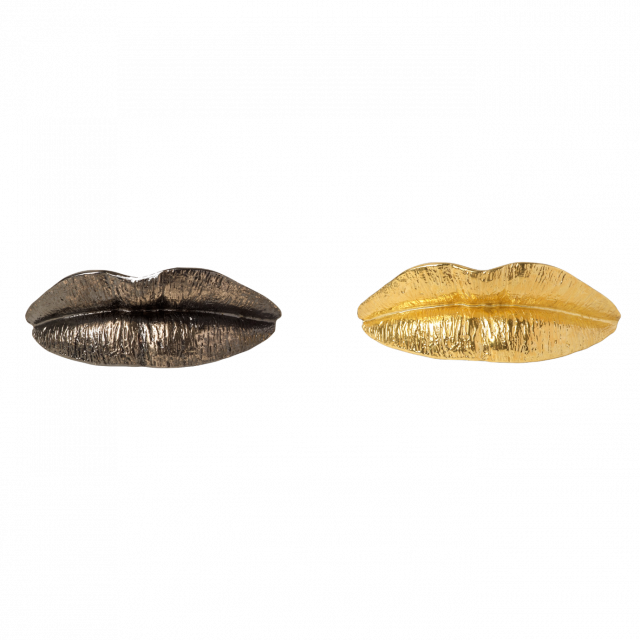
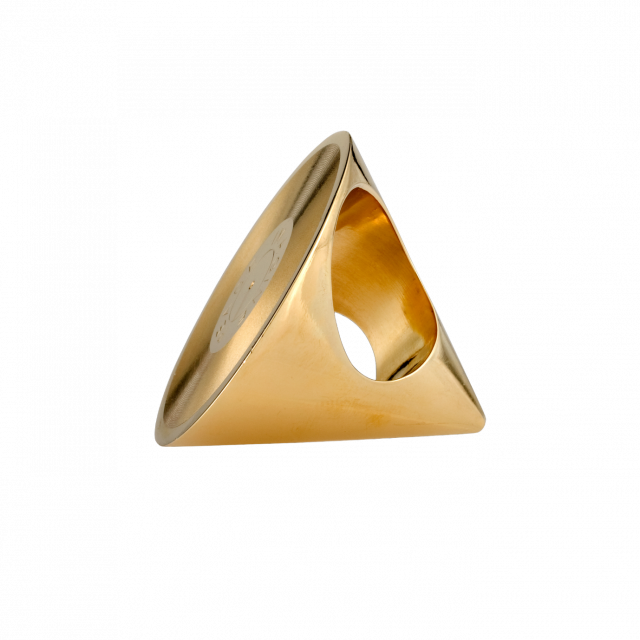
UNA MEISTERE
You call your collection an intimate museum.
DIANE VENET
Yes, because these pieces are works of art. Mini works of art that aren’t miniatures of the artist’s other work, but at the same time they definitely bear the artist’s creative signature. Bernar, for example, has made almost all of his jewellery only for me. And each piece, in turn, corresponds to a specific period of his creative work. I thus possess an exhaustive and representative collection of jewellery that corresponds to the Indeterminate Lines, Arcs, Angles, and Straight Lines that have made up his artistic vocabulary for the past few years.
At the same time, the artists do not wish to make these pieces of jewellery commercial, which preserves their intimacy. Their main field is paintings and sculptures, not jewellery.
UNA MEISTERE
Jewellery is a specific genre that demands certain skills. For some artists, that could pose a challenge as well.
DIANE VENET
For example, the above-mentioned jewellery made of pebbles, Picasso made it himself. But in the late 1950s and 1960s, he worked a lot with the goldsmith François Hugo, whom he had met when looking for someone who could make his ceramic platters out of silver. Later, the two of them together developed the idea about medallions inspired by motifs in Picasso’s drawings. That was two years before Picasso died. They’re in editions of twenty. But what’s twenty compared with Picasso’s editions on paper? The last ones are in editions of hundreds. So, his jewellery is still very special and unique.
Max Ernst, Jean Cocteau, Man Ray – they all worked with François Hugo. Niki de Saint Phalle, for her part, had help with her jewellery from her Italian friend GianCarlo Montebello. She wanted the jewellery to be made of enamel and just as colourful as her sculptures. But working with enamel is very complicated, so she turned to Montebello. Bernar, on the other hand, makes all of his jewellery himself. I bring him pieces of long bars of silver or gold from 47th Street here in New York, and then he bends them and does everything himself. So, they’re all unique.
But sometimes artists have an idea, they make a drawing, but they don’t know how to make it into a piece of jewellery, because they don’t have the skills. It’s not their job. But it doesn’t change anything. That’s like saying, oh, Jeff Koons, Koons doesn’t do his own things, Koons has a hundred and twenty assistants. Well, in Italy during the Renaissance, they had two hundred and fifty assistants. It doesn’t matter. The main thing is who has the idea and the desire to realise it. But, of course, if an artist has made a piece of jewellery with his own two hands, it’s got added value.
I think César’s ideas were very significant in jewellery art. After he presented his compressed cars in the 1960s, he later took this same idea and applied it to jewellery. He invited his friends to give him their formerly significant but no longer important jewellery: medallions from childhood, small rings, etc. Then he compressed them and turned them into a sort of pendant of concentrated memories of the past. And he called them “micro-sculptures”.
UNA MEISTERE
You’ve also got jewellery by contemporary artists in your collection. To be honest, I cannot imagine a romantic story behind the jewellery made by Jeff Koons or Damien Hirst. Or maybe I’m wrong?
DIANE VENET
You know, Jeff Koons did a piece for Stella McCartney. She convinced him. They were very close, and he’s a very special guy. It took him five years to say “yes” to the piece. He did just one piece; I think it’s an edition of fifty, and he said he will never make any more. So, I had really lined up to get one, because there are so many collectors of Jeff Koons who are ready to pay enormous amounts of money for any work done by him. I think Koons was very friendly with Stella McCartney, but I’m not sure it’s a romantic story.
Yoko Ono, for example, has made only two pieces of jewellery. Both were made in collaboration with Filippini. One is a ring called Imagine Peace, made of 18k white and yellow gold in the form of an LP record. It’s a kind of dedication to her and John Lennon’s peace activism in the 1970s. “Imagine” is written at the centre, a symbolic link to Lennon’s famous song. It’s not romantic, but it’s memory. It’s a story.
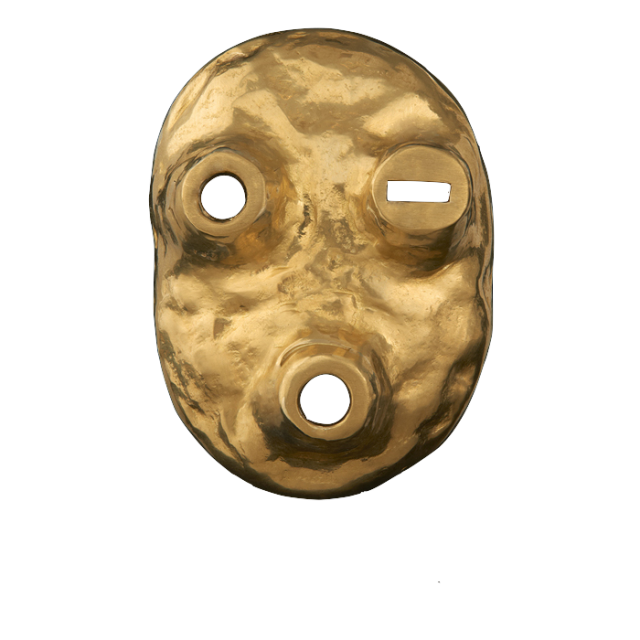
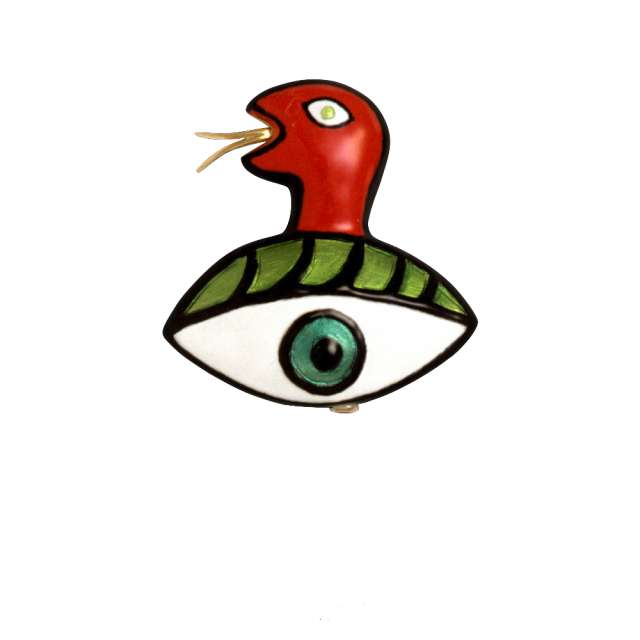
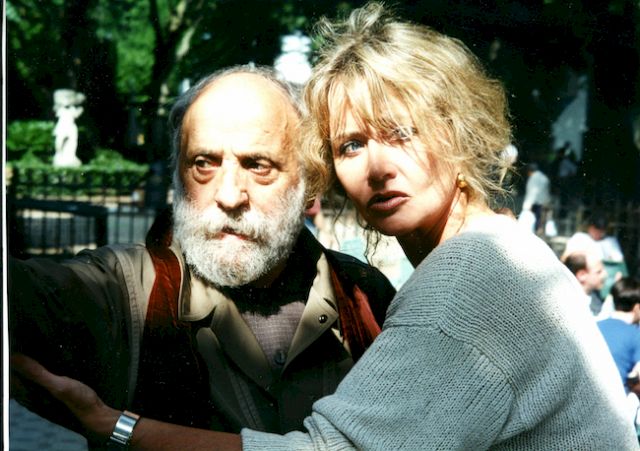
UNA MEISTERE
How many copies do artists usually make of their jewellery?
DIANE VENET
It depends. Picasso has twenty copies of one piece. Some have made several copies of a piece of jewellery, others make only one. Montebello, who made jewellery not only for Niki de Saint Phalle but also Man Ray, Lucio Fontana and Gio Pomodoro, was the one who started the idea of editions of an artist’s jewellery in the 1960s. Usually editions are from 8 to 20. It depends. For example, Man Ray’s Optic–Topic (1974) gold mask is an edition of one hundred, but I’m not sure that one hundred were actually made. On the other hand, Warhol, who had never before shown any interest in jewellery, was persuaded by the Swiss watchmaker Movado to create a watch design ….in 1987, shortly before his death. This limited edition of 250 copies was presented at the Basel fair in 1998. But, as far as I know, not all of the copies were actually made. When I was still going to school in New York, I bought a piece of jewellery by Roy Lichtenstein that was made in an almost unlimited edition and at the time cost three dollars at an art gallery. Now it would sell for 5000 dollars, if you could find one, of course.
UNA MEISTERE
How do the artists themselves valuate the pieces? Do they consider them works of art or something more like an affair, a fling, a little joke?
DIANE VENET
No, they respect it. For five years I’ve been trying to persuade my friend, the American sculptor Joel Shapiro, to create a piece of jewellery for my collection. He says “yes” to the idea, but he still doesn’t know how to actually do it. I think that when the artists find a way, they like it. They know that it’s going to be in books and in museums and it’s going to be representing them. No, I think they assume it. But at the same time, I’m completely convinced that once the museum curator decides to do an exhibition, he or she will exhibit the artist’s paintings and sculptures…and maybe not their jewellery. Not yet.
There aren’t any precious stones in there. Because the precious aspect is not the material; the precious aspect is the idea.
DIANE VENET
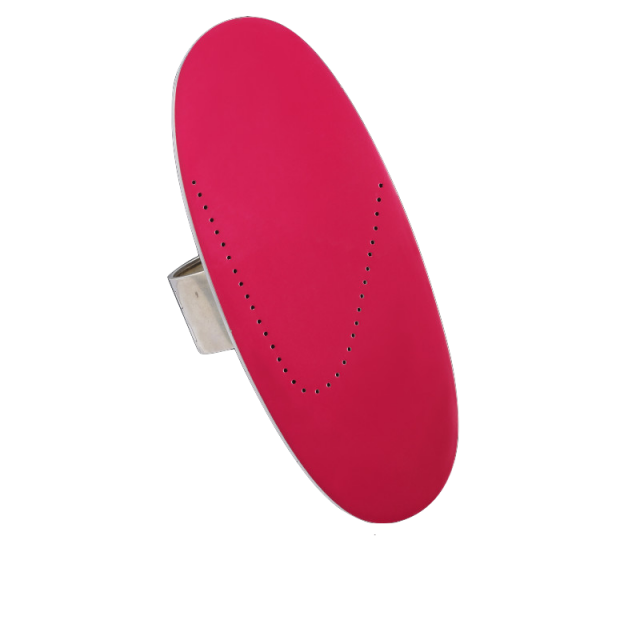

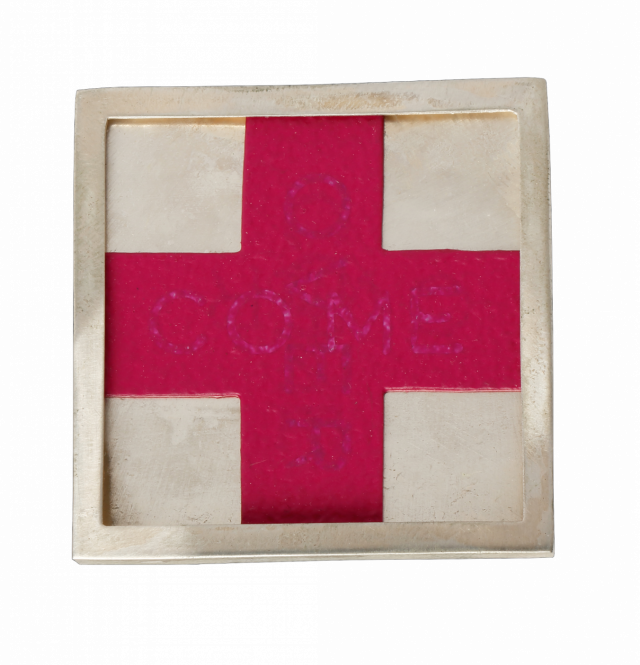
UNA MEISTERE
There’s always this discussion – is jewellery an art or a craft?
DIANE VENET
I know. When I exhibited in Venice, my collection was shown in cases, like jewellery. And, it’s possible that the pieces also looked more like jewellery when they were presented in such a way. In Miami and Athens, on the other hand, I exhibited them on the walls. Protected, of course, but more as if they were works of art on a wall. It looks different that way. It depends on the way you present it.
It’s true, when I see women visiting the show, they see jewellery. But men see art. And also, there’s always this moment of surprise. Many people don’t even know that Lucio Fontana did jewellery, as well as Picasso. Then you have people who are very art-oriented and who see art immediately. And then you have others who see just jewellery, because they see necklaces, rings….
UNA MEISTERE
In the same piece?
DIANE VENET
Yes, in the same piece. But I myself try to insist on the fact that it’s art. But I think that with time, as the market develops and more and more collectors and new artists in the field emerge, jewellery’s status as art will only grow stronger.
UNA MEISTERE
But there are surprisingly few collectors of artist jewellery.
DIANE VENET
Very few, but the number is growing. In the beginning, I bought a lot at auction. But I can’t anymore, it’s so expensive. I think I helped building up the market. Currently there’s a Chinese guy who’s collecting with no money limits, and he’s buying unique pieces from all over the world. His collection will most probably become the best in a few years! Alexander Calder’s pieces nowadays sell for 300,000 and 400,000 dollars. I can’t afford that.
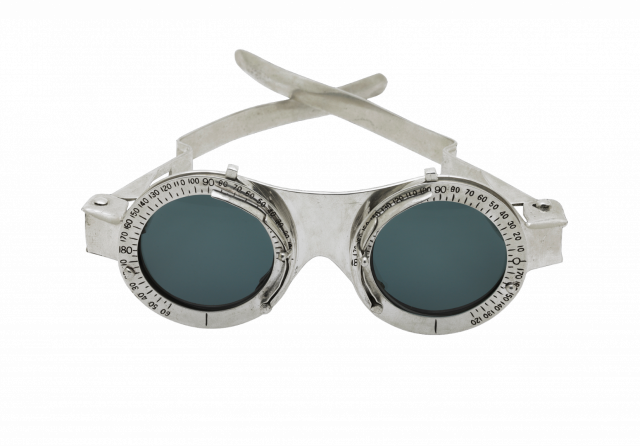
UNA MEISTERE
Calder was once one of the most prolific artists. I read somewhere that he created more than 1800 pieces of jewellery.
DIANE VENET
Yes, and all of them are unique. Throughout his life he designed and constructed items of jewellery as gifts for his close family and friends. For example, if you invited him to dinner, at six o’clock he’d go to his studio and do a new piece with your letter “U” and give it to you on that evening. He made 1800 pieces like this, but they are all unique. So, it’s fantastic because it’s his hand. Dalí made drawings and then they were done in many editions. That’s not the same thing.
UNA MEISTERE
One could say that with your collection and the exhibitions you’ve organised, you have created the market for artist jewellery.
DIANE VENET
I think so. At the beginning, it was a really a niche, because it was totally unknown and people hadn’t heard anything about artist jewellery. But now you have two art jewellery auctions in Paris in December. That’s never happened before. Before, you had one or two artist jewellery pieces in the middle of a painting and sculpture sale, but never specialised. Now it’s different. It builds up the market, which is interesting because it means that it’s known.
UNA MEISTERE
On the other hand, though, prices are going up….
DIANE VENET
Exactly. Now my thing is to go for the new artists and ask them to make a special piece for me to improve the collection in another way.
UNA MEISTERE
Have you yourself bought much at auctions?
DIANE VENET
A lot, but years ago. For example, I bought Pomodoro at auctions in Monaco. It was OK, nobody was much interested in it. The people who go to jewellery auctions in Monaco, they go for rubies, for diamonds and for sapphires. They don’t go for the necklace by Pomodoro. They didn’t even know who he is. So, sometimes I bought very well.
UNA MEISTERE
But why are people so crazy about rubies, diamonds and all the precious stones?
DIANE VENET
Because in their souls, women are very classical. Let’s say, if you are born into aristocracy and saw your mother and grandmother wearing things like that, you don’t think about it and just assume it’s normal. And then you have young women from middle-class families and they want to look like those from the aristocracy – they dream about their weddings, the white dress and the diamond on their finger. And then you have women with maybe a little more personality, they go for something different. You know, it’s funny, but when I wear pieces like this and I’m at some social event, sometimes nobody asks me what it is. They all have diamonds, and nobody comes up to me to ask what I’m wearing. It’s funny, no?
UNA MEISTERE
It’s strange.
DIANE VENET
It’s very strange. Because these pieces are special. You either like them or you don’t.
UNA MEISTERE
When you buy a new piece, do you always try it on?
DIANE VENET
Yes. Because, you know, it’s very new. And I just feel I become closer to the artist ! I know it’s a very selfish reaction, but it’s a special feeling….
UNA MEISTERE
It all started with your wedding ring. But when did you realise that you are becoming a collector? At which point did that happen?
DIANE VENET
It started with Bernar, and then he gave me a piece by his friends César and Arman. And then, little by little, he became bigger as an artist, and I felt that I had to have my own thing on the side. I’d never been a serious collector before. I’m not a collector at heart, not like people who’ve collected something since they were kids. No. I’m very curious, I’m interested in many things. This is the first time I’ve collected something. Really. And I collect with limits – money limits and knowledge limits. Because I don’t spend all my time doing only that. It began little by little, and now it’s growing more and more. Because now I can look on the computer to see where there’s some auction going on that could be interesting.
UNA MEISTERE
You become a bit of a hunter?
DIANE VENET
Exactly. And I miss things, for example, two pieces by Chirico were sold at an auction sale in Rome three months ago. I don’t have Chirico in my collection, but I would love to, because I think he is a great artist. And he did only a few pieces and they are very good. At that auction, one piece went for 100,000 euros, and I just can’t do that. But it doesn’t matter. I go with younger artists and people I can afford.
I looked for Dalí for a very long time, because I need a Dalí in a serious collection. The director of the Dalí museum is a good friend of mine, but they never lend anything, nor do they sell anything, of course. Besides, I didn’t want a piece of jewellery that had been made in a hundred or a thousand copies. After a long search, I finally found a brooch by him at a gallery in Paris. It’s an edition of six, but we only know of three. It’s a spoon, a gold and enamel coffee spoon, but inside the spoon there is a clock, and under the spoon there’s a comb. It’s a completely surrealistic thing. I love that piece very much. You know, when you search for a long time and finally find something, that’s exciting, too.

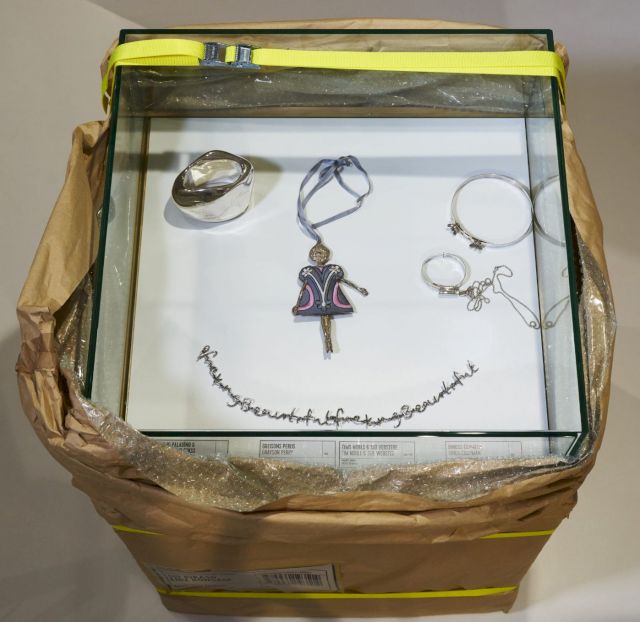
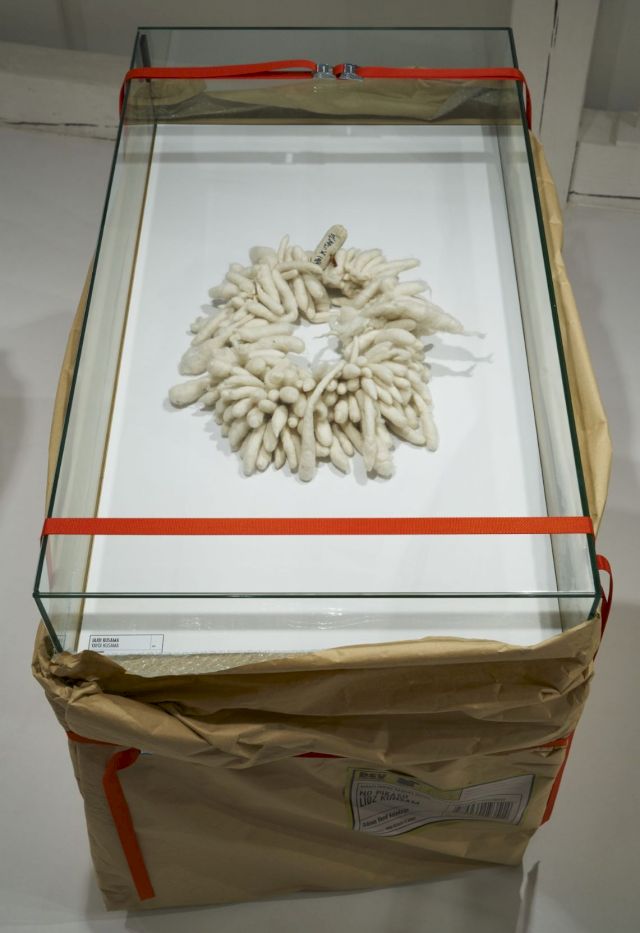
UNA MEISTERE
Have you ever had the feeling that you overpaid to get some piece?
DIANE VENET
Yes. Koons is overpriced. I paid 50,000 dollars for his piece, and it’s probably overpriced because of fashion, etc. Anyway, I think that Koons is a very good artist. Some people say that it’s junk, but I don’t think so. I know he will be remembered. Yes, I probably overpaid for it, but I thought that it’s important to have his piece in the collection. It’s very expensive, but if I wanted to sell it today, it would probably be twice the price. It’s ridiculous, but this is our world. But I’m not selling it anyway.
UNA MEISTERE
From your point of view, how do you feel when so much money flows into the art market? Is that helpful to the development of art or quite the opposite?
DIANE VENET
No. I think it’s terrible. You know why? The terrible flow of money arises because people don’t spend it in another way. They want, they think they’re going to get surprises. A year ago, Bernar and I were in Singapore. There’s a duty-free space next to the airport where you can store artwork without having to pay taxes. There’s one like it in Geneva, too. The works of art are mostly bought by companies or rich collectors. Of course, they don’t give their names. After the auction sale, they just put the artwork in boxes, the boxes are put on a plane, and then they arrive in Singapore. At the end of the drive there’s a gate, and it all goes directly into safes. I think it’s terrible, because nobody will see those works of art again. It’s just about the money. So sad.
UNA MEISTERE
But is there still a correlation between the real value of art and the price?
DIANE VENET
Rarity makes the price, of course. But I think prices have gone too high. For example, if you buy Cézanne, a very good Cézanne for a high price, it’s maybe too much money for art, but OK, Cézanne is a part of art history. But if you’re going to buy one of those Chinese guys or Richard Prince for 20 million dollars – come on, what does it mean? And the money doesn’t even go to him. When a piece by Jeff Koons is sold by a collector at auction, it’s not Koons who makes the money. I think some powerful collectors are responsible for this situation. Because what do they do? They just do business. They send some young knowledgeable art advisors to artists’ studios all over the world, and when they see the studio of a young artist who is doing interesting things, they buy the whole studio. Those big collectors keep a part of it, and they sell the rest at an auction sale, therefore building up the price. The poor artist thinks, oh, it’s done with him…. So he changes his studio, he buys cars….
UNA MEISTERE
…he loses his mind…
DIANE VENET
Exactly. And three years later, he’s out.
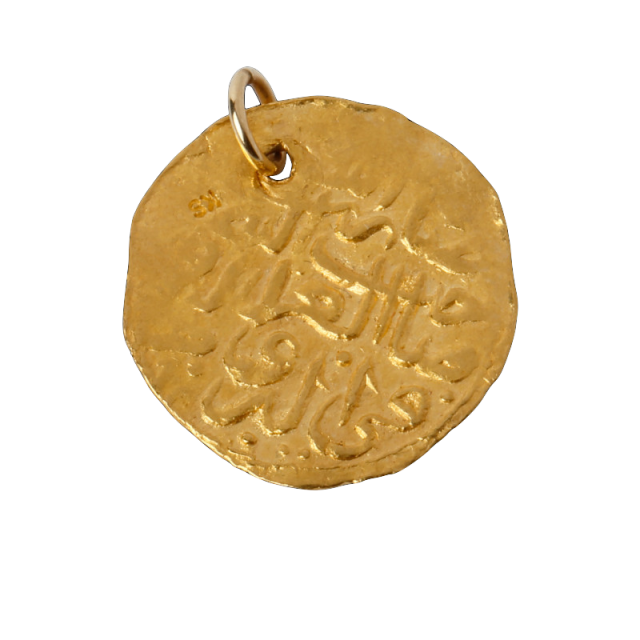
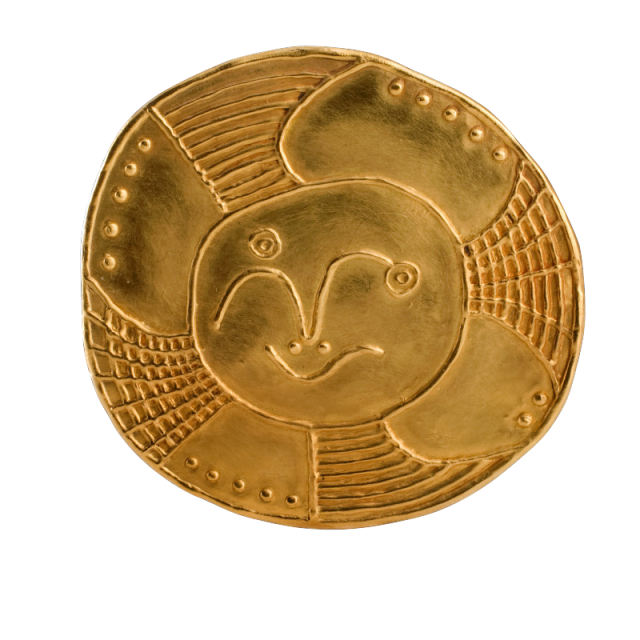

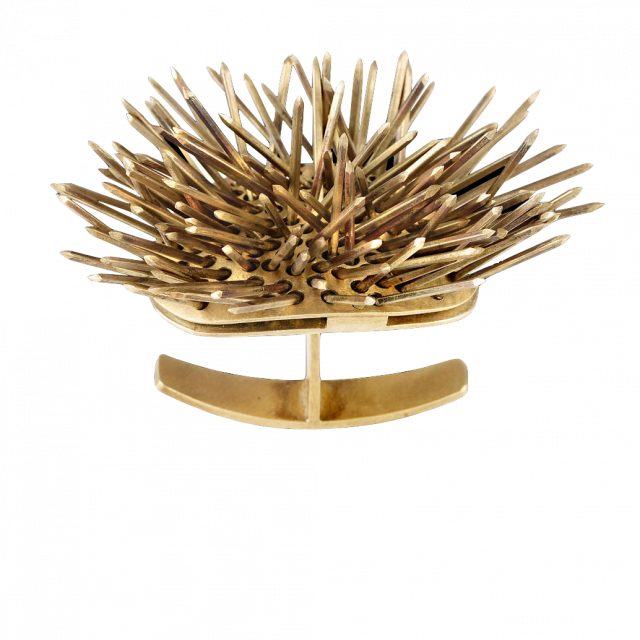
UNA MEISTERE
Because he’s not creative anymore?
DIANE VENET
Exactly. Or, the price of his work slowly increases until the collector, who owns most of the artist’s work, puts them all up for sale at auction, and then the price falls. Maybe the artist lives better compared to when he didn’t have any money at all… but these collectors have earned twice as much as the artist. I think that’s wrong.
UNA MEISTERE
Based on your experience as a collector, why do people have this desire to possess, to own things? After all, you can go to a museum and see it all there.
DIANE VENET
Yes, in a museum it’s available to everyone. And this is why I like to show. But before showing, I own, that’s true. So, I think it’s a very human desire. It’s true that you can rent an apartment, but if you can own an apartment, you prefer to be at your place. No? It’s human. But there’s a difference between owning something and living with it, and owning something and keeping it locked away in a safe.
Jewellery by Artists: From Picasso to Koons is on show at the Latvian National Museum of Art from November 4 until December 3, 2017.